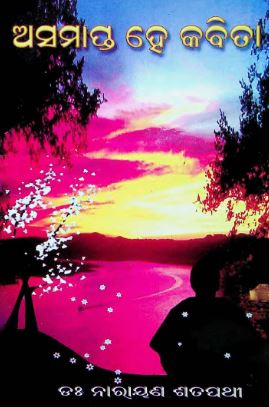The rich tapestry of Odia literature is adorned with many remarkable works that continue to resonate with readers across generations. One such literary gem is the beloved poem compilation “Asamapta He Kabita” by Narayan Satpathy. First published in 1968 and then reissued in an expanded edition in 2011, this collection is an evocative exploration of human emotions and existential reflections, beautifully woven through Satpathy’s masterful poetry.
“Asamapta He Kabita,” which translates to “Incomplete Odes,” is a reflection of the incompleteness inherent in human life and experience. True to its title, the poems in this collection leave readers on the cusp of deeper contemplation, sparking a myriad of emotions and thoughts. Satpathy’s work invites one to ponder over themes of love, loss, nature, and the inexorable passage of time.
Narayan Satpathy’s poetry is known for its lyrical charm and profound depth. His narrative style is both intimate and grandiose, effortlessly capturing the essence of everyday moments while also touching upon universal truths. Whether he is recounting the fleeting beauty of a sunset or delving into the intricate layers of human relationships, Satpathy’s verses maintain a delicate balance between simplicity and profoundness.
His use of metaphors and rich imagery adds layers of meaning to each poem, making them not only a pleasure to read but also ripe for introspection. The language, though rooted in the Odia vernacular, speaks to universal human experiences, making the poems accessible and relatable to a wide audience.
The reissued edition of “Asamapta He Kabita” in 2011 breathed new life into this classic. The second edition retains the poignancy of the original while introducing fresh perspectives through additional poems. It is illustrative of Satpathy’s evolving thought processes over the decades, offering readers new dimensions to explore within familiar themes.
The expanded edition also includes insightful forewords and commentaries that provide context and deeper understanding of Satpathy’s work. These additions enhance the reader’s engagement, allowing a more nuanced appreciation of the poet’s vision and literary contribution.
One of the defining characteristics of “Asamapta He Kabita” is its timelessness. Despite being rooted in the cultural and social milieu of its time, the collection’s exploration of fundamental human emotions renders it ageless. Readers today will find as much relevance and resonance in Satpathy’s words as those who first encountered his work over five decades ago.
Moreover, the themes of incompletion and perpetual seeking are universally appealing. They mirror the human condition — our endless quest for meaning and the acceptance of the transient nature of our existence. Satpathy’s reflective and often philosophical approach makes this collection not just a literary experience but a spiritual journey as well.
Narayan Satpathy’s “Asamapta He Kabita” stands as a monumental contribution to Odia literature. Its influence can be seen in how contemporary poets and writers draw inspiration from Satpathy’s ability to capture the ephemeral beauty of life and human emotions. The collection remains a touchstone for those who seek to understand and express the intricate dance of joy, sorrow, and everything in between.
In conclusion, “Asamapta He Kabita” is more than just a book; it is a timeless tapestry of words that continues to inspire, comfort, and provoke thought. Whether you are rediscovering this classic or encountering it for the first time, Satpathy’s poetic mastery promises an enriching and transformative experience.
Books Info
| Books name | Asamapta He Kabita/ଅସମାପ୍ତ କବିତା |
| Editor | Narayan Satpathy |
| No Of pages | 31 |
| Publisher | Satya Prakasha |
| Publication | 1968, 2011, 2e. |
| Printed At | Shyama Printers |
| Distributor | NA |

